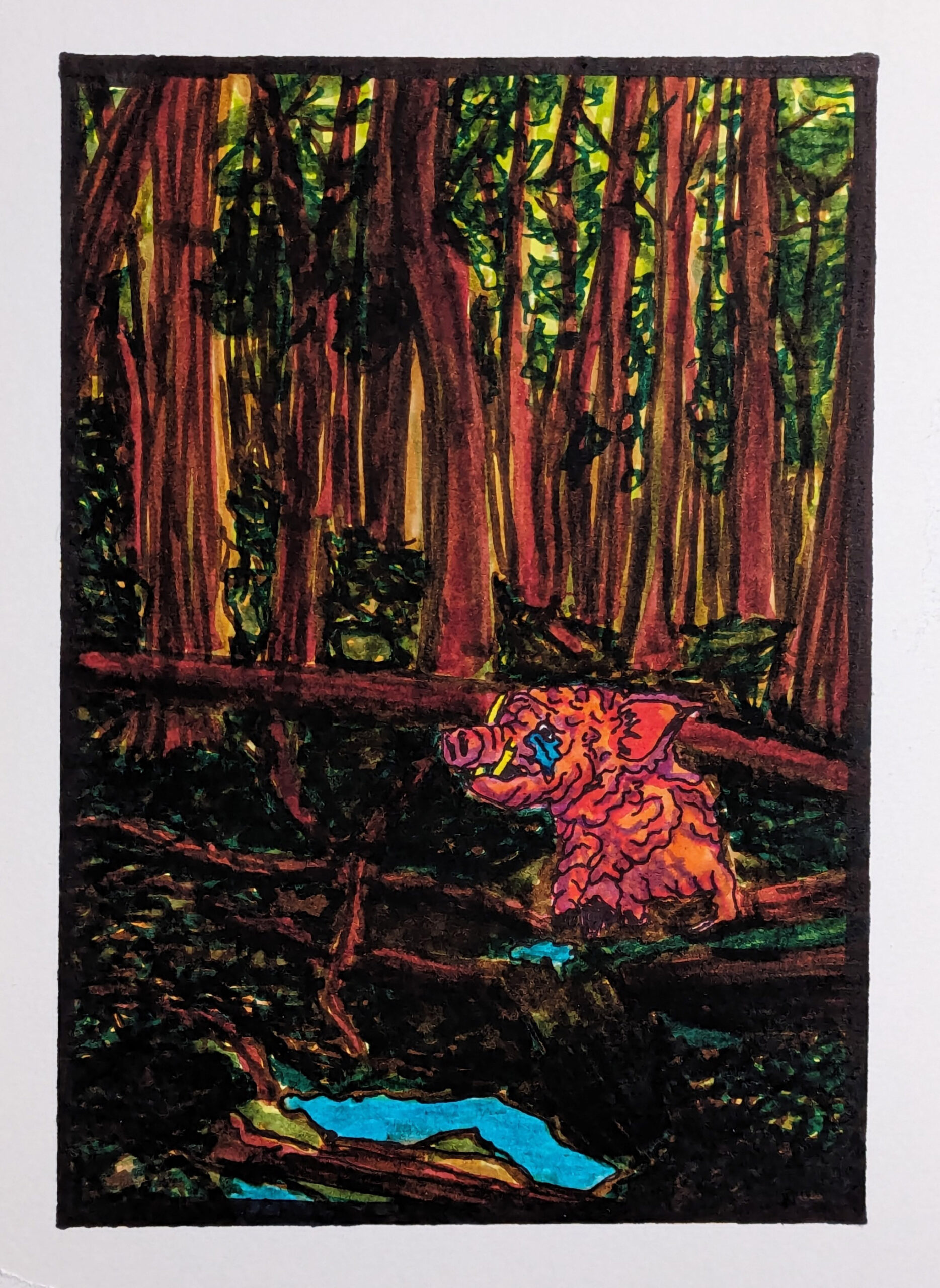A sad and lonely Squonk crying up a fresh spring in a hemlock forest somewhere in Pennsylvania
Like many days in my life, yesterday I was ignorant, and today I am just a dumbass. But now, thanks to my friend known as Roe I now know that a Squonk exists. It is sad. It made me sad. So I thought I would immortalize it with my shaky hands, questionable vision, and trusty brush pens. I hope you enjoy.
Here is the data I was able to find on this creature.
Squonk Profile:
- Regional Names: Known as “Mogwog” in Native American folklore and “Weeping Beast” in Appalachian legends.
- Known Origin and Basic Lore: According to Native American folklore, the squonk originated from the dense forests of the Pacific Northwest, while Appalachian lore suggests it emerged from the misty hills of the Appalachian Mountains.
- Significant Sightings: Numerous sightings have been reported throughout history, with accounts ranging from early Native American tribes to modern-day hikers and hunters. The squonk is often associated with melancholy and elusive encounters.
- Physical Description: The squonk is described as a small, nocturnal creature resembling a cross between a porcupine and a sloth. Its fur is patchy and unkempt, ranging in color from ashen gray to mossy green. Its most distinctive feature is its large, sorrowful eyes, often swollen and tear-streaked.
- Behaviors: Squonks are solitary creatures, rarely seen in the company of others. They are primarily nocturnal, foraging for food under the cover of darkness. Despite their sorrowful appearance, squonks are known for their agility and speed when pursued.
- Abilities: Legends claim that squonks possess the ability to dissolve into tears when threatened, rendering them nearly invisible to predators. However, this ability has never been scientifically substantiated.
- Preferred Habitat: Squonks are typically found in dense, old-growth forests with ample vegetation for cover and water sources for drinking. They are most commonly sighted in the remote wilderness areas of the Pacific Northwest and the Appalachian Mountains.
- Range of Sightings: Sightings of squonks have been reported throughout the Pacific Northwest and the Appalachian region, with sporadic accounts extending into other forested areas of North America.
- Likelihood of Existence: While no conclusive evidence of the squonk’s existence has been found, some cryptozoologists speculate that it could be based on sightings of real-world animals such as the wolverine or the tree sloth. However, the elusive nature of the squonk and the lack of concrete evidence make its existence highly speculative.


